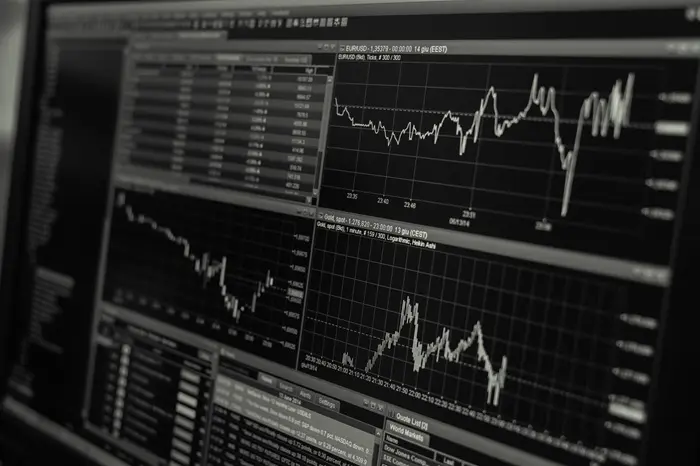The world of stock trading can be complex and intimidating, particularly for new investors. One of the key concepts that every stock trader should understand is the term “open order.” In this article, we will explore the meaning of an open order, how it works, and why it is an essential part of stock trading. We will break down the topic into clear, easy-to-understand sections to help you navigate through this important concept.
What is an Open Order?
An open order refers to a type of order that has been placed by a trader but has not yet been executed or filled. When a trader places an open order, they are indicating their intention to buy or sell a particular stock at a specific price. However, the order remains pending until it matches with a corresponding order in the market.
Open orders are a common tool used by investors and traders to manage their stock trades. These orders can be left open for different periods, from a few minutes to several days, depending on the trader’s strategy and the type of order they’ve placed.
Types of Orders That Can Be Open
There are various types of orders that can be placed in the stock market, and each type can result in an open order. The most common types of open orders include:
Market Orders
A market order is the most basic type of order. It instructs the broker to buy or sell a stock immediately at the best available price in the market. Although market orders are usually executed quickly, they can also be placed as open orders. This happens when the stock is unavailable at the desired price or when the market is temporarily unavailable for the transaction.
Limit Orders
A limit order is a more specific type of order, where the trader sets a price limit at which they are willing to buy or sell a stock. For example, a trader may place a limit order to buy a stock if it drops to a certain price. The order remains open until the stock price hits that target price or the trader cancels the order.
Limit orders are one of the most common types of open orders. They allow traders to control the price they pay or receive for a stock, but they do not guarantee that the order will be filled if the price does not reach the desired level.
Stop Orders
A stop order, also known as a stop-loss order, is placed to buy or sell a stock once it reaches a certain price, known as the stop price. A stop order is often used to protect gains or limit losses. Like limit orders, stop orders can also remain open if the stock does not reach the stop price.
Stop-Limit Orders
A stop-limit order combines the features of both stop orders and limit orders. A stop-limit order is triggered once the stop price is reached, but it is only executed if the stock can be bought or sold at a specified price or better. This type of order is often used by traders who want to ensure that they do not get filled at an undesirable price, but it can result in an open order if the stock never reaches the stop price or the limit price.
Good-Til-Canceled Orders (GTC)
A Good-Til-Canceled (GTC) order is a type of open order that remains active until it is either executed or canceled by the trader. This order type is ideal for traders who want to place an order and leave it open for an extended period, such as a few days or even weeks. GTC orders are commonly used in conjunction with limit and stop-limit orders to ensure that a trader’s desired price is met.
Day Orders
A day order is another type of open order that remains valid only for the trading day in which it was placed. If the order is not filled by the end of the day, it is automatically canceled. Day orders are often used for more immediate trades, where the trader does not want to leave the order open overnight.
How Open Orders Work in the Stock Market
To understand how open orders function in the stock market, it is important to know how they interact with the market and other traders. Here’s a breakdown of how open orders work:
Placing the Order: A trader decides to place an open order for a stock. Depending on the type of order, they will specify the details, such as the quantity of shares, the desired price, and the time frame (e.g., day order, GTC).
Waiting for a Match: Once the order is placed, it enters the order book and waits for a match. In the case of a market order, the order may be filled immediately, but with limit and stop orders, the order will remain open until the stock price reaches the target specified by the trader.
Execution of the Order: When the stock price meets the conditions of the open order (e.g., the limit price is reached), the order is filled. The order is no longer open, and the trade is executed.
Unfulfilled Orders: If the stock price does not reach the desired level within the time frame specified in the order, the order remains unfilled and can be canceled by the trader. Alternatively, GTC orders can remain open for an extended period until they are either filled or canceled.
Advantages of Using Open Orders
There are several advantages to using open orders in stock trading. Open orders offer traders greater control over the price at which they buy or sell stocks, as well as the flexibility to manage their trades without constantly monitoring the market. Some of the key benefits include:
1. Control Over Price
One of the primary benefits of placing an open order is the ability to set a specific price at which you are willing to buy or sell a stock. This control allows traders to avoid overpaying for a stock or selling it for less than they intended. With limit orders, traders can ensure that their trades are executed at a price that aligns with their investment strategy.
2. Flexibility
Open orders allow traders to take a more relaxed approach to stock trading. By placing an open order, traders can set their desired price and let the market do the work. This can be especially beneficial in volatile markets, where prices may fluctuate rapidly, and traders may not have the time to monitor every movement.
3. Reduced Risk
Using stop orders, such as stop-loss orders, helps traders manage risk by automatically triggering a sale when a stock reaches a certain price. This can help to limit losses if the stock price moves in an unfavorable direction. Stop-limit orders also provide additional control, ensuring that the trade is only executed at a specific price or better.
4. Time Efficiency
For traders who do not want to be constantly checking the market, open orders can be an efficient way to place trades without needing to be present at all times. Once an open order is placed, it will remain active and wait for the right conditions to be met, allowing traders to focus on other tasks.
Risks and Limitations of Open Orders
While open orders offer many advantages, there are also risks and limitations that traders should be aware of. Some of the potential downsides of open orders include:
1. Partial Fills
In some cases, open orders may not be filled in their entirety. This can happen when there is not enough stock available at the specified price, leading to partial fills. This issue can be especially common with large orders or illiquid stocks.
2. Missed Opportunities
One of the biggest risks of placing an open order is the potential for missed opportunities. If the stock price moves away from the desired price and never returns, the order may never be filled. This can be particularly frustrating for traders who are waiting for the perfect entry point or exit point.
3. Market Volatility
In volatile markets, stock prices can change rapidly, making it more difficult for open orders to be executed. Limit orders, in particular, may remain open for longer periods as the stock price fluctuates, and traders may miss out on favorable price movements.
4. Order Expiration
Certain types of open orders, such as day orders, will expire at the end of the trading day if they are not filled. This can result in the order being canceled without execution, potentially causing the trader to miss an opportunity to execute the trade.
Conclusion
An open order is a fundamental concept in stock trading, allowing traders to specify the conditions under which they want to buy or sell a stock. Open orders offer advantages, such as greater control over price, flexibility, and reduced risk, but they also come with risks, such as missed opportunities and partial fills. Understanding the different types of open orders, how they work, and their advantages and limitations is essential for every trader looking to navigate the stock market effectively.
By using open orders wisely, traders can implement strategies that align with their goals and risk tolerance. Open orders are a valuable tool in a trader’s arsenal, providing the flexibility and control needed to execute successful trades in the dynamic and fast-paced world of the stock market.
Related topics:


































